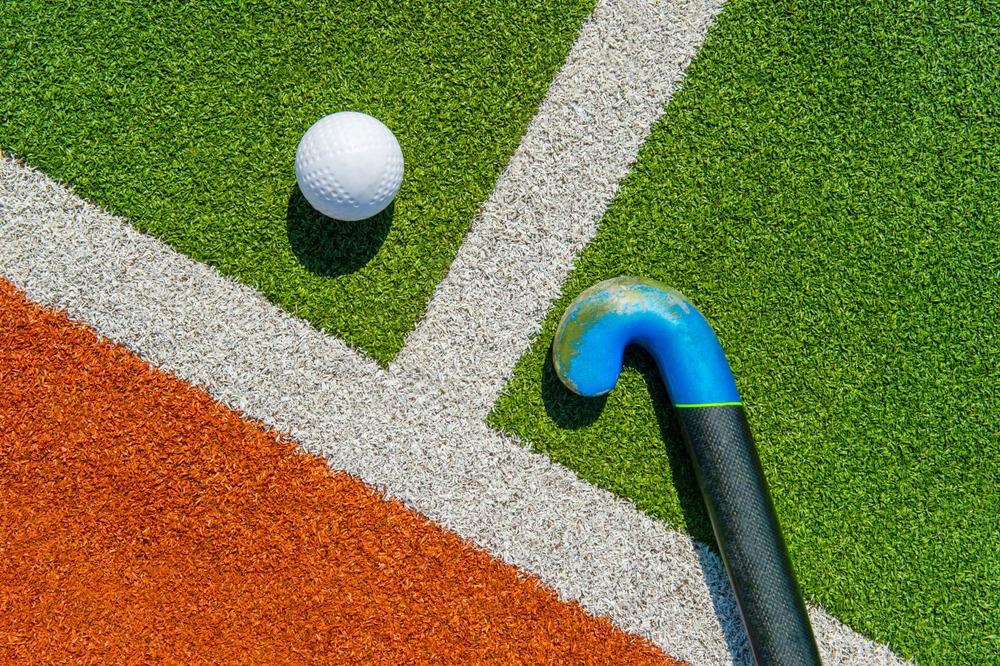Although the graphene industry has expanded substantially, scientists feel that it has not yet reached its potential. Graphene has revolutionized the sports industry due to its many unique properties. This article focuses on its association with various sports, such as hockey, skiing, tennis, etc.

Image Credit: sportoakimirka/Shutterstock.com
Graphene is an extraordinary material with great physicochemical, electrical, mechanical, and thermomechanical properties. This material is considered to be a promising source for next-generation products.
Graphene is a carbon allotrope that is formed when carbon atoms bond together in a two-dimensional honeycomb lattice in sp2 hybridization. Graphene-based materials are developed via a top-down or bottom-up process. Some of the top-down processes include electrochemical, mechanical, and chemical exfoliation of graphite.
The bottom-up methods include chemical vapor deposition and chemical synthesis. Graphene is known to be the primary element of many carbon allotropes such as fullerenes, carbon nanotubes, and graphite. Graphene is regarded to be the thinnest and strongest carbon-based nanomaterial.
Properties and Application of Graphene
Graphene has many other characteristic features, such as flexibility, being lightweight, and conductivity. One of the most common methods of using graphene is by developing composites, i.e., adding graphene to other existing products. Graphene-based composites are used in multiple industries owing to their favorable characteristic properties, such as the development of rust-free coatings.
For example, a combination of graphene in paint develops a unique coating that prevents the formation of rust. Additionally, these graphene-based composites are used to construct weatherproof houses or leak-free packaging systems. These materials have also been used in the aerospace industry, for example in the development of aircraft wings.
This has not only reduced the weight of the aircraft, but also protected it from the detrimental effects of lighting strike damage, and significantly improved fuel efficiency. Graphene-based materials have also been used in wearable technologies, agriculture, healthcare, marine, and automobile industries.
Graphene in Sports
Recently, a number of sports items, such as helmets, hockey sticks, bicycle frames, skis, and golf clubs, are manufactured using graphene-polymer nanocomposites. In sports, particularly, graphene-enhanced tennis racquets have gained much popularity. Scientists are optimistic that these composite materials could also be applied in Formula 1 shortly. Some of the contributions of graphene in sports are discussed below:
Golf and Bladder Ball
An inflatable bladder ball has been produced using avanGRP40, which is basically a graphene powder. This bladder ball has been manufactured by mixing graphene powder in a rubber mixer machine. The addition of avanGRP40 increased the barrier effect which reduced the loss of pressure significantly.
Further, the mechanical properties, especially the tensile properties, were significantly improved by this process. This has prominently benefitted both downstream retailers and the end-users. In golf, the graphene-enhanced golf balls have significantly improved the performance of the players as these balls have better speed, control, and travel a longer distance.

Image Credit: Thaninee Chuensomchit/Shutterstock.com
Hockey
Recently, XG Sciences, a global graphene manufacturer, has announced the production of novel hockey sticks reinforced with graphene. Grays of Cambridge has been associated with the manufacturing of sports equipment for many years. They strategically incorporated graphene in hockey sticks to enhance the performance of the players.
The addition of graphene not only enhanced the durability but also provided exceptional power, feel, and playability. Graphene technology has strengthened the hockey sticks, which absorb the shock better. Further, the hockey sticks are much lighter now, which has enabled the players to run around the field with better ball control.
Tennis
Scientists have analyzed a graphene-enhanced tennis racquet using optical microscopy and Raman spectroscopy. They revealed that the main structural components of these racquets were the robust carbon fibers in an epoxy resin matrix. Graphene improves the mechanical properties of the resin-rich regions. Head, an Austrian-based producer of tennis racquets, stated that graphene enhances the durability of the product and also protects the users from injury.
Sports Accessories
Colmar, an Italian outerwear brand, has developed graphene-enhanced garments, for example, ski jackets and trousers. Graphene-based fabrics are non-toxic, hypoallergenic, and non-cytotoxic to humans. Interestingly, this material acts as a filter between the body and the external environment and, hence, ensures an ideal temperature for the user.
These fabrics distribute the heat generated by the human body homogenously in cold weather as well as in hot weather. Additionally, graphene-based garments possess bacteriostatic effects that enhance hygiene and anti-odor features. These features are particularly desirable for sportswear.
Researchers have used the bi-dimensional and planar nature of graphene in the optimal development of sportswear. The graphene-based fabric improves the breathability of the textile product as well. Directa Plus, a global manufacturer of graphene-based products, designs personalized thermal circuit garments. It has also been awarded a US patent for its production of graphene-based flame-resistant composition, which is extremely relevant for motorsports.
Osaka, the Japan-based sportswear company, has produced the world’s first graphene-based athletic shoes in 2018. In this shoe, graphene was mixed with rubber to produce soles that are many times stronger and durable, compared to ordinary training shoes. These soles are not only stronger but are also more stretchable and wear-resistant. The stickiest outsole enhances the performance of users by providing a robust grip while running on a wet trail.
Another interesting application of graphene is the development of wearable sensors. These sensors can monitor the heart rate of a sportsperson in real-time. In the future, graphene-based sensors could be designed to assess muscle movement, which could help sports managers to evaluate the degree of a player’s recovery following injury.
References and Future Reading
Faruque, A.l. et al. (2021) A Review on the Production Methods and Applications of Graphene-Based Materials. Nanomaterials (Basel, Switzerland). 11(9), 2414. https://doi.org/10.3390/nano11092414
The Graphene Counsil. (2020) [Online] Available at: https://www.thegraphenecouncil.org/blogpost/1501180/Graphene-Updates?tag=sporting+goods
Gibbons, S. (2018) The power of graphene in sportswear. [Online] Available at: https://www.wtin.com/article/2018/march/260318/the-power-of-graphene-in-sportswear/
Young, R.J. and Liu, M. (2016) The microstructure of a graphene-reinforced tennis racquet. Journal of Materials Science. 51. pp. 3861–3867. https://doi.org/10.1007/s10853-015-9705-6
Disclaimer: The views expressed here are those of the author expressed in their private capacity and do not necessarily represent the views of AZoM.com Limited T/A AZoNetwork the owner and operator of this website. This disclaimer forms part of the Terms and conditions of use of this website.